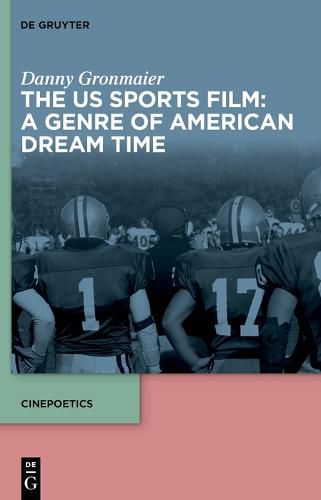Readings Newsletter
Become a Readings Member to make your shopping experience even easier.
Sign in or sign up for free!
You’re not far away from qualifying for FREE standard shipping within Australia
You’ve qualified for FREE standard shipping within Australia
The cart is loading…






This title is printed to order. This book may have been self-published. If so, we cannot guarantee the quality of the content. In the main most books will have gone through the editing process however some may not. We therefore suggest that you be aware of this before ordering this book. If in doubt check either the author or publisher’s details as we are unable to accept any returns unless they are faulty. Please contact us if you have any questions.
Sports and film are media that create time. They are temporal not only in the sense that they are defined and regulated by certain temporalities as a result of processes of social negotiation, but also in the sense of modulating and intervening in these processes in the first place. They are determined by multiple temporalities referring to and aligning along perceptual corporeality; but at the same time, they also produce time through and along temporalities of bodily expression and perception. Thus, as much as we perceive and understand sports and film by means of our culturally coded conceptions of time, this comprehension is itself already the product of these media’s fabrication and modulation of certain audiovisual imaginations of time. This book examines these imaginations with regard to US team sports feature films, understanding the former as the latter’s constitutive conflict which makes these films graspable as a genre in the first place. By addressing temporality as an ever-new crystallization of a heroic past and an unattainable future in a saturated yet volatile present, this conflict connects substantially to the American Dream as an idea of community-building historicity. Departing from a non-taxonomic approach in genre theory and such philosophical recognition of the American Dream as less an ideological narrative but more a social and socially effective imaginary embedded in an audiovisual discourse of time, this book demonstrates the interrelation of sports, cinema and American subjectivization along close readings of the poetics of affect of five exemplary sports films (FIELD OF DREAMS, WE ARE MARSHALL, KNUTE ROCKNE ALL AMERICAN, JIM THORPE - ALL-AMERICAN, MIRACLE).
$9.00 standard shipping within Australia
FREE standard shipping within Australia for orders over $100.00
Express & International shipping calculated at checkout
This title is printed to order. This book may have been self-published. If so, we cannot guarantee the quality of the content. In the main most books will have gone through the editing process however some may not. We therefore suggest that you be aware of this before ordering this book. If in doubt check either the author or publisher’s details as we are unable to accept any returns unless they are faulty. Please contact us if you have any questions.
Sports and film are media that create time. They are temporal not only in the sense that they are defined and regulated by certain temporalities as a result of processes of social negotiation, but also in the sense of modulating and intervening in these processes in the first place. They are determined by multiple temporalities referring to and aligning along perceptual corporeality; but at the same time, they also produce time through and along temporalities of bodily expression and perception. Thus, as much as we perceive and understand sports and film by means of our culturally coded conceptions of time, this comprehension is itself already the product of these media’s fabrication and modulation of certain audiovisual imaginations of time. This book examines these imaginations with regard to US team sports feature films, understanding the former as the latter’s constitutive conflict which makes these films graspable as a genre in the first place. By addressing temporality as an ever-new crystallization of a heroic past and an unattainable future in a saturated yet volatile present, this conflict connects substantially to the American Dream as an idea of community-building historicity. Departing from a non-taxonomic approach in genre theory and such philosophical recognition of the American Dream as less an ideological narrative but more a social and socially effective imaginary embedded in an audiovisual discourse of time, this book demonstrates the interrelation of sports, cinema and American subjectivization along close readings of the poetics of affect of five exemplary sports films (FIELD OF DREAMS, WE ARE MARSHALL, KNUTE ROCKNE ALL AMERICAN, JIM THORPE - ALL-AMERICAN, MIRACLE).